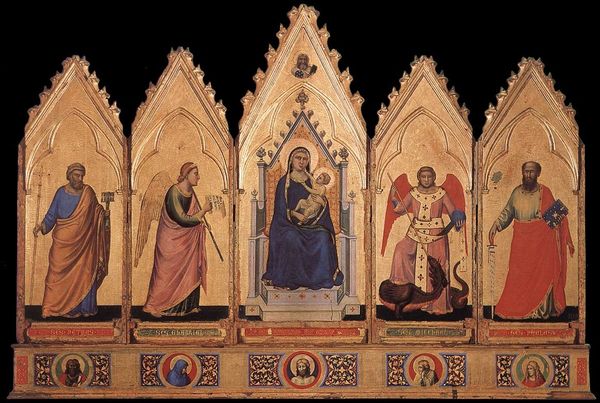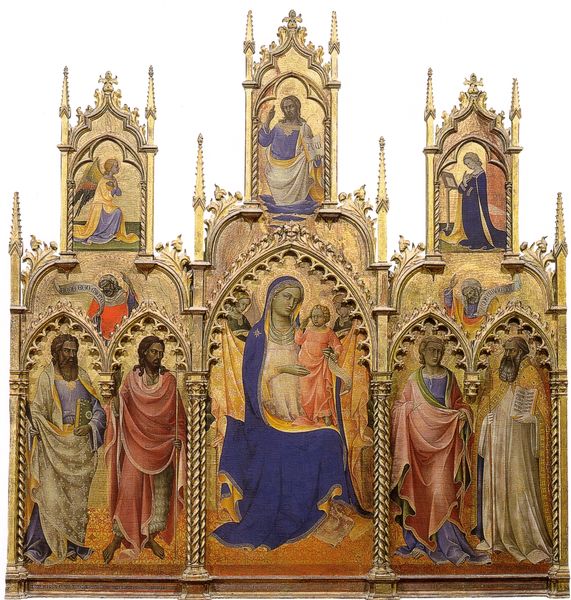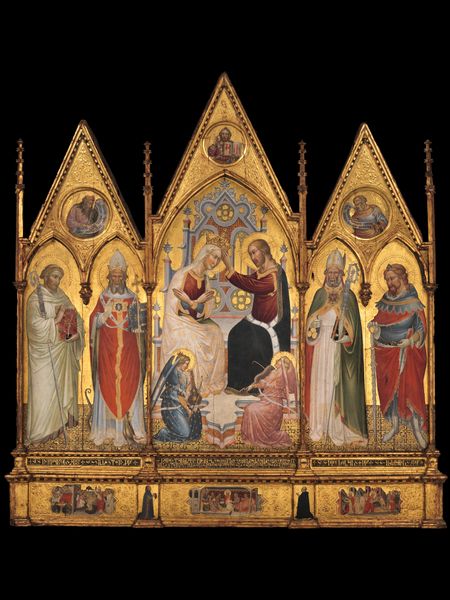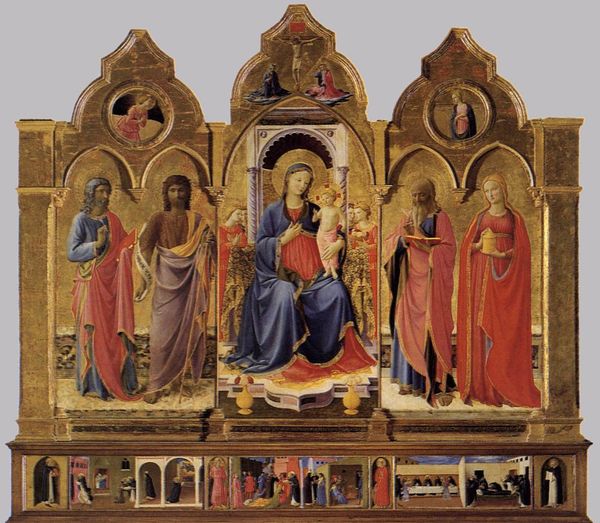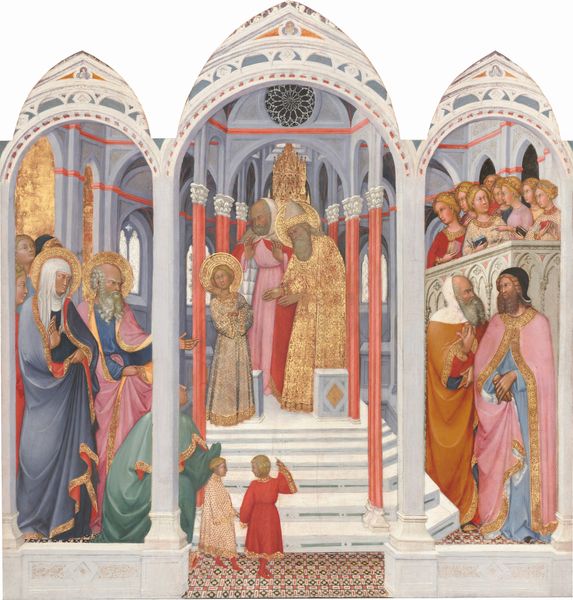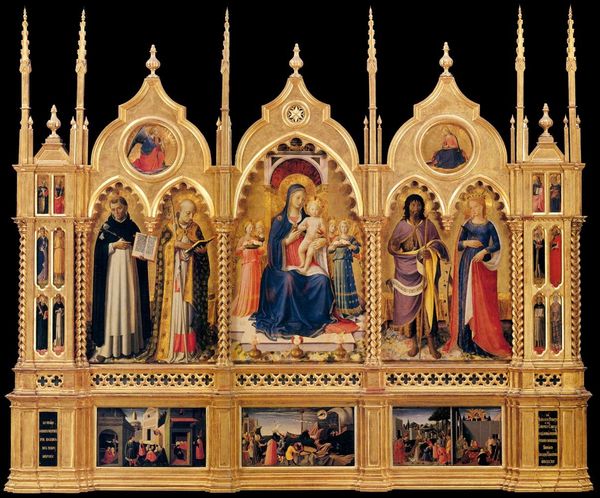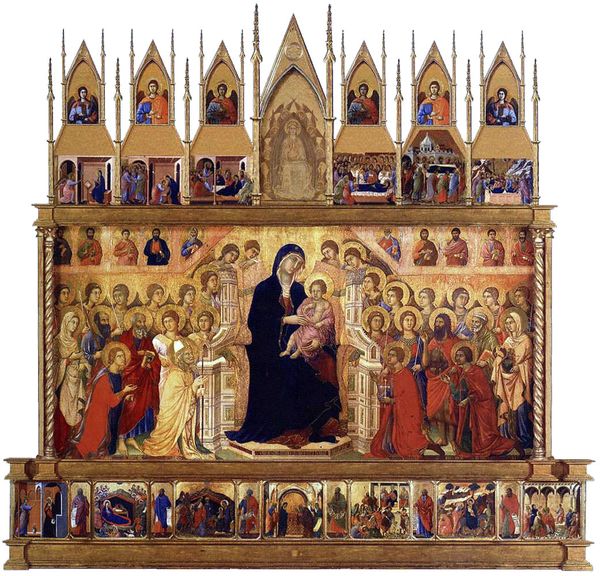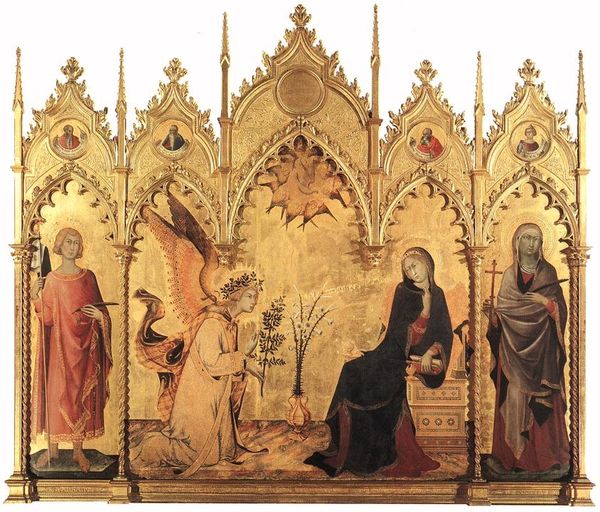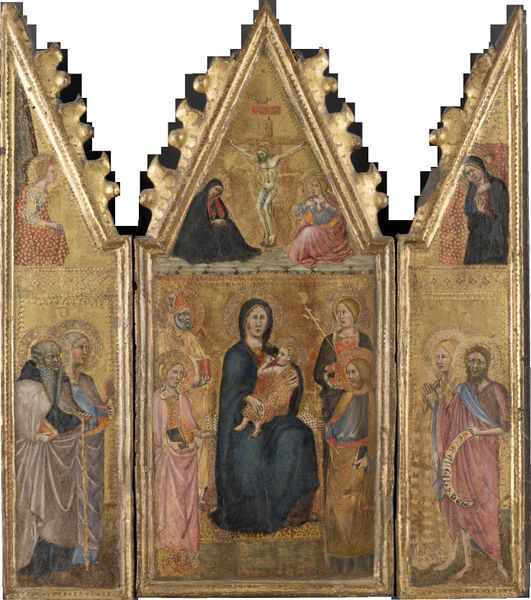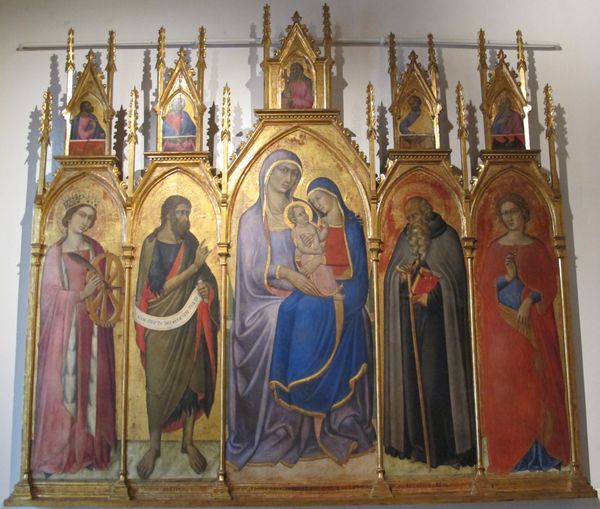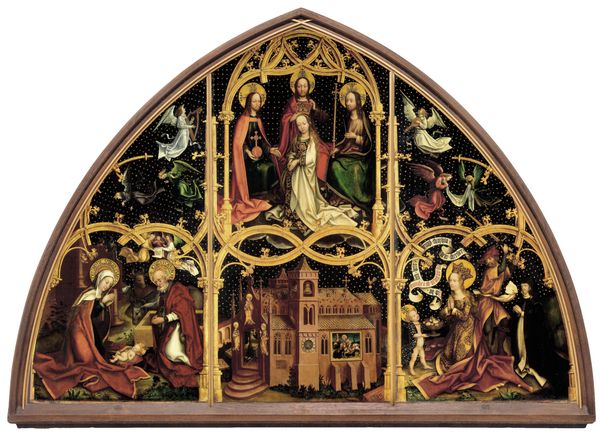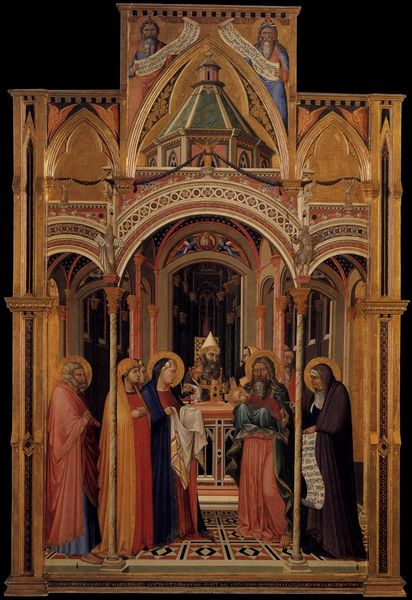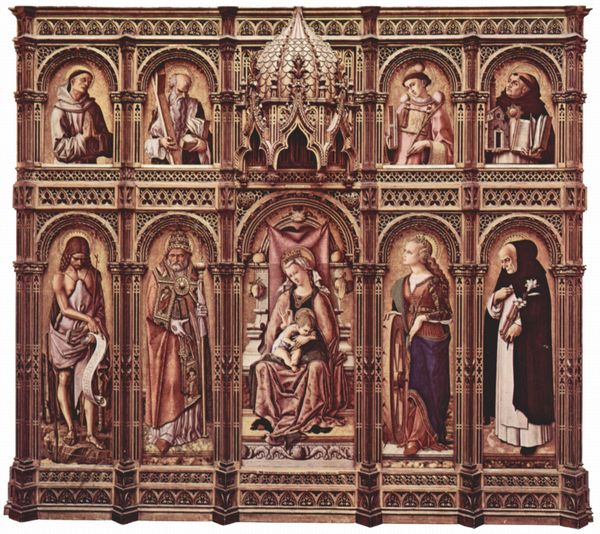
panel, tempera, painting
#
medieval
#
panel
#
tempera
#
painting
#
sculpture
#
holy-places
#
figuration
#
oil painting
#
history-painting
#
international-gothic
Dimensions: 130 x 230 cm
Copyright: Public domain
Editor: So, we’re looking at the “Annunciation Triptych” painted around 1415 by Lorenzo Monaco, made with tempera on panel. It strikes me how ethereal the gold background makes the scene, almost like a dream. What do you make of the way Monaco uses color and space here? Curator: The overwhelming use of gold certainly establishes an otherworldly, divine space, echoing Byzantine traditions and emphasizing the spiritual significance of the Annunciation. It acts as a visual mnemonic, reminding viewers of the heavenly realm. Notice how the figures are elongated and float rather than stand—how does that impact the emotional tone of the image for you? Editor: I guess it contributes to that sense of otherworldliness, like they're not quite bound by gravity. But what about the figures on either side? Who are they and what is their role? Curator: Those are saints flanking the central scene: On the left, likely Catherine of Alexandria and another saint, and on the right, perhaps Proculus and Francis. They’re like witnesses to this pivotal moment. These aren't mere portraits, though. They’re carriers of symbolic weight – what narratives do they invoke for you? Editor: I can see that. It's like they represent different aspects of faith and the legacy of Christian belief connected to the story. The presence of saints turns a key scene in a Holy text into a story of faith and power that the patrons sought to echo. It helps me understand the work as more than a picture: It’s a cultural anchor. Curator: Precisely. This work, viewed in its original context, becomes more than art. Editor: Thanks, I see so many layers I hadn’t noticed before. Curator: It reveals how images, over time, can gather multiple strata of meaning.
Comments
No comments
Be the first to comment and join the conversation on the ultimate creative platform.
